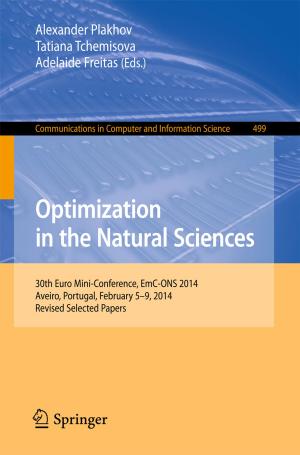Ascorbic Acid in Plant Growth, Development and Stress Tolerance
Nonfiction, Science & Nature, Science, Biological Sciences, Botany, Technology, Agriculture & Animal Husbandry| Author: | ISBN: | 9783319740577 | |
| Publisher: | Springer International Publishing | Publication: | March 19, 2018 |
| Imprint: | Springer | Language: | English |
| Author: | |
| ISBN: | 9783319740577 |
| Publisher: | Springer International Publishing |
| Publication: | March 19, 2018 |
| Imprint: | Springer |
| Language: | English |
Ascorbic acid (AsA), vitamin C, is one of the most abundant water-soluble antioxidant in plants and animals. In plants AsA serves as a major redox buffer and regulates various physiological processes controlling growth, development, and stress tolerance. Recent studies on AsA homeostasis have broadened our understanding of these physiological events. At the mechanistic level, AsA has been shown to participate in numerous metabolic and cell signaling processes, and the dynamic relationship between AsA and reactive oxygen species (ROS) has been well documented. Being a major component of the ascorbate-glutathione (AsA-GSH) cycle, AsA helps to modulate oxidative stress in plants by controlling ROS detoxification alone and in co-operation with glutathione. In contrast to the single pathway responsible for AsA biosynthesis in animals, plants utilize multiple pathways to synthesize AsA, perhaps reflecting the importance of this molecule to plant health. Any fluctuations, increases or decreases, in cellular AsA levels can have profound effects on plant growth and development, as AsA is associated with the regulation of the cell cycle, redox signaling, enzyme function and defense gene expression. Although there has been significant progress made investigating the multiple roles AsA plays in stress tolerance, many aspects of AsA-mediated physiological responses require additional research if AsA metabolism is to be manipulated to enhance stress-tolerance. This book summarizes the roles of AsA that are directly or indirectly involved in the metabolic processes and physiological functions of plants. Key topics include AsA biosynthesis and metabolism, compartmentation and transport, AsA-mediated ROS detoxification, as well as AsA signaling functions in plant growth, development and responses to environmental stresses. The main objective of this volume is therefore to supply comprehensive and up-to-date information for students, scholars and scientists interested in or currently engaged in AsA research.
Ascorbic acid (AsA), vitamin C, is one of the most abundant water-soluble antioxidant in plants and animals. In plants AsA serves as a major redox buffer and regulates various physiological processes controlling growth, development, and stress tolerance. Recent studies on AsA homeostasis have broadened our understanding of these physiological events. At the mechanistic level, AsA has been shown to participate in numerous metabolic and cell signaling processes, and the dynamic relationship between AsA and reactive oxygen species (ROS) has been well documented. Being a major component of the ascorbate-glutathione (AsA-GSH) cycle, AsA helps to modulate oxidative stress in plants by controlling ROS detoxification alone and in co-operation with glutathione. In contrast to the single pathway responsible for AsA biosynthesis in animals, plants utilize multiple pathways to synthesize AsA, perhaps reflecting the importance of this molecule to plant health. Any fluctuations, increases or decreases, in cellular AsA levels can have profound effects on plant growth and development, as AsA is associated with the regulation of the cell cycle, redox signaling, enzyme function and defense gene expression. Although there has been significant progress made investigating the multiple roles AsA plays in stress tolerance, many aspects of AsA-mediated physiological responses require additional research if AsA metabolism is to be manipulated to enhance stress-tolerance. This book summarizes the roles of AsA that are directly or indirectly involved in the metabolic processes and physiological functions of plants. Key topics include AsA biosynthesis and metabolism, compartmentation and transport, AsA-mediated ROS detoxification, as well as AsA signaling functions in plant growth, development and responses to environmental stresses. The main objective of this volume is therefore to supply comprehensive and up-to-date information for students, scholars and scientists interested in or currently engaged in AsA research.















